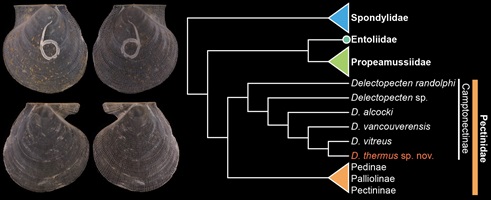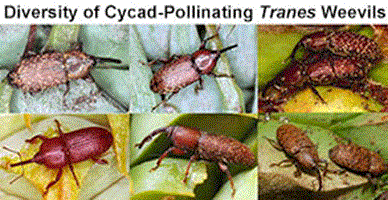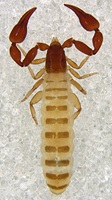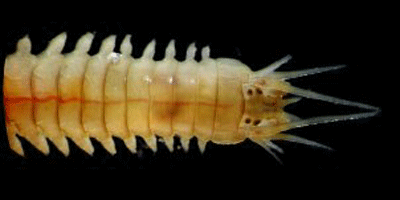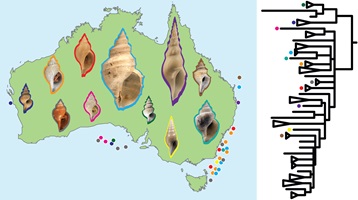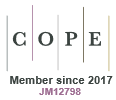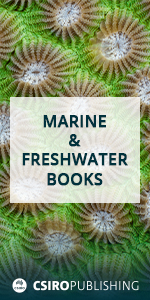The diversity and phylogeny of deep-sea Delectopecten scallops are poorly known. We describe Delectopecten thermus sp. nov. from the Higashi–Ensei vent field through morphological, mitogenomic and phylogenetic analyses. Our findings indicate that Delectopecten is monophyletic representing an early diverging pectinid clade, with significant gene-order divergences in mitogenome, but asymbiotic with chemoautotrophs. These results enhance our understanding of the biodiversity of Delectopecten, clarify the phylogenetic relationships within the genus, and provide insights into the trophic patterns of deep-sea scallops. (Image credit: Yi-Tao Lin.)
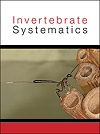
Invertebrate Systematics
Volume 39 Number 2 2025
This paper determines the taxonomic diversity and host specificities of the cycad-associated weevils of the Tranes group in Australia. We recognise 17 natural species in four genera by combining analysis of morphological characteristics and mitogenomic data. We describe six new species of Tranes and redescribe its four previously named species. We also provide a key to all genera and species of the Tranes group in Australia. (Image credit: Rolf G. Oberprieler, Kirke M. Fisher and Nicholas Fisher).
IS24078 Abstract | IS24078 Full Text | IS24078PDF (32.7 MB) | IS24078Supplementary Material (508 KB) Open Access Article
A recent molecular and morphological analysis of the pseudoscorpion family Garypinidae revealed three subfamilies, each with distinct morphological features. We add three new taxa to the molecular analysis that provides evidence for one of these subfamilies to be newly elevated to family level, Amblyolpiidae. We also describe a new genus, Absensus, from the Himalayan Plateau that can be attributed to Amblyolpiidae based on morphological criteria. (Photograph by Zhizhong Gao.)
IS24098 Abstract | IS24098 Full Text | IS24098PDF (6.2 MB) Open Access Article
Annelids are increasingly being found to comprise a substantial fraction of cryptic biodiversity. Perinereis cultrifera is commonly used as a model species, but the possibility of unreported and undescribed cryptic species may compromise the accuracy and interpretation of results. In this study, integrative taxonomy revealed overlooked morphological traits and 18 different European Perinereis lineages (13 of which are formally described) yielding new molecular and taxonomic data available to a range of efforts including metabarcoding, species identification, conservation and biomonitoring. (Image credit: Joachim Langeneck.)
The conoidean family Raphitomidae is arguably among the most diverse deep-sea gastropod groups. We studied recently collected deep-water raphitomids from south-eastern Australia, generated combined genetic, shell, anatomy and distribution data, described three new species, and revised eight more across several raphitomid genera. Our results contribute to the understanding of the global distributional patterns of deep-sea raphitomid species, ranging from the very rare and possibly endemic to those exhibiting transoceanic ranges or occupying remarkably wide depth intervals. (Image credit: Francesco Criscione.)



